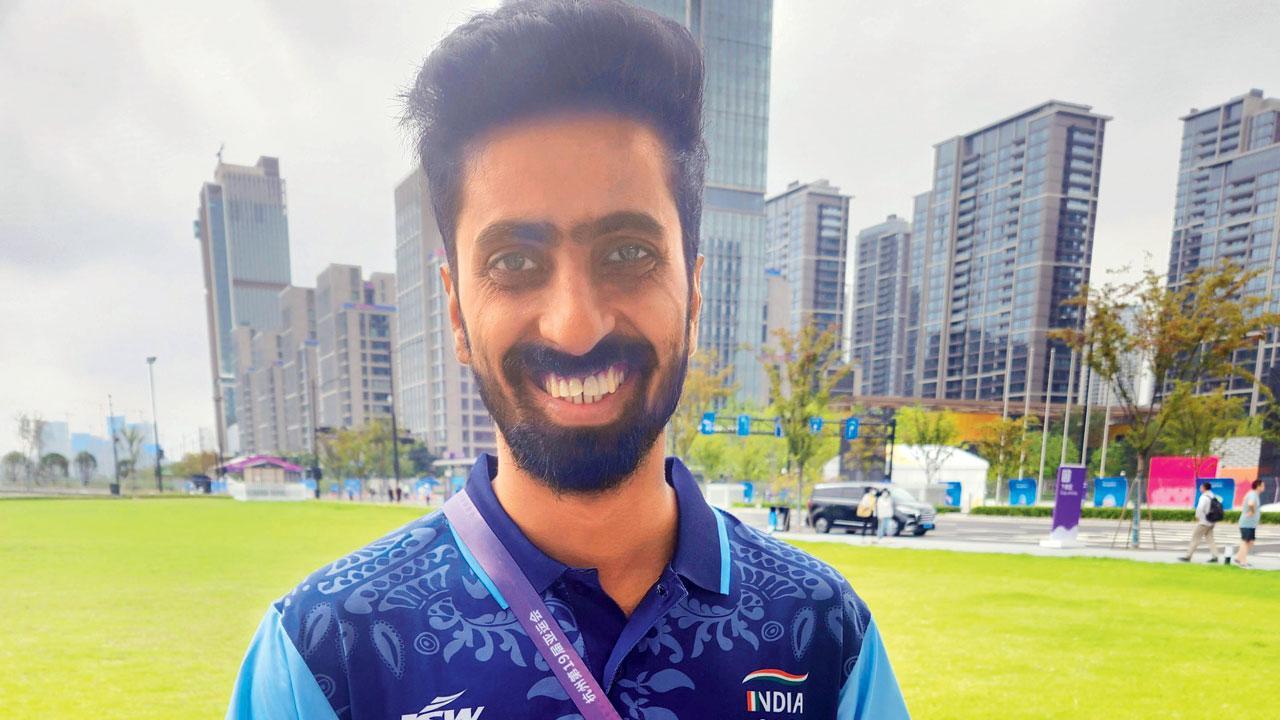So what makes China’s TT players almost invincible? “It’s a combination of exclusive equipment and a ruthless strategy that begins early,” explains Sathiyan

India table tennis star G Sathiyan at the Athletes Village yesterday. Pic/Ashwin Ferro
India’s men’s table tennis stars must feel hard done given they have a powerhouse in China to contend with here. On Friday evening, in the round of 16, India’s star paddler G Sathiyan lost in the men’s singles to China’s Wang Chuqin 0-4 and then went down 0-3 in the doubles alongside Achanta Sharath Kamal to the Chinese pair of Chuqin and Fan Zhendong.
ADVERTISEMENT
So what makes China’s TT players almost invincible? “It’s a combination of exclusive equipment and a ruthless strategy that begins early,” explains Sathiyan. “All Chinese players use a special Hurricane DHS rubber for their racquets. This rubber is only made in China and very difficult to play with for the first few years. It is hard and offers a lot of spin and high impact which can only be generated with a lot of power in your swing,” says Sathiyan.
Also Read: Asian Games 2023: Bringing bronze to the table!
“The Chinese start young with this rubber and struggle for the initial years. That’s why you don’t see them winning international events at the junior level. But once they have mastered this rubber after a few years, they are almost unbeatable,” he adds. The obvious question arises: Why can’t India import this rubber and train youngsters?
“That’s because firstly the rubbers are expensive to import and secondly, if a youngster continuously keeps losing matches for the first few years in India, he/she will obviously quit the sport. Also, it’s impossible to start playing with these rubbers at a later age, even I can’t play with them,” explained Sathiyan, adding that the Chinese table tennis system is the opposite of how the TT structure works in India. “They first teach their kids technique and physicality and only later touch upon tactics. In India, we are first taught to win matches using tactics and only later is our technique and physicality worked on,” he concludes.
 Subscribe today by clicking the link and stay updated with the latest news!" Click here!
Subscribe today by clicking the link and stay updated with the latest news!" Click here!







